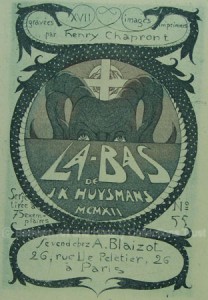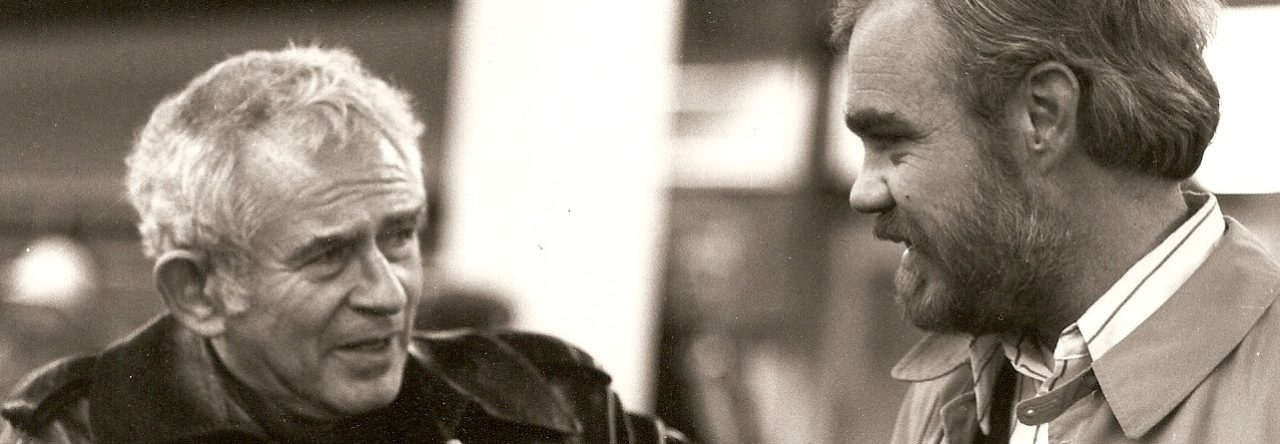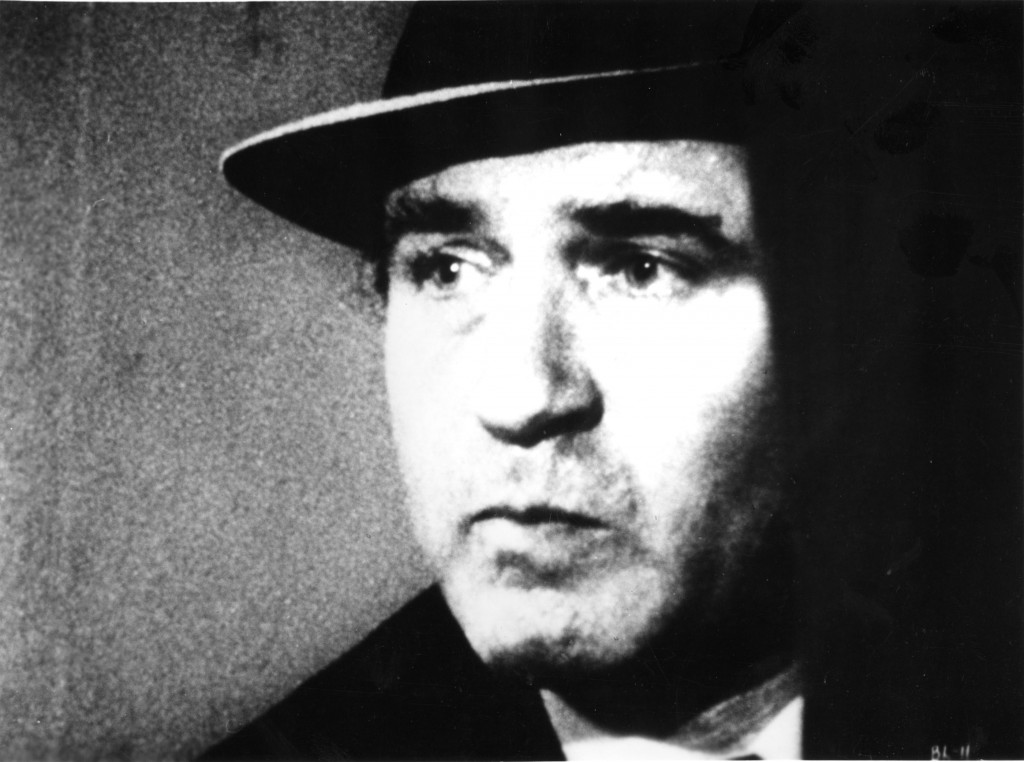DID YOU KNOW? Perhaps the rarest of Mailer publications is his rebuttal to the response of a major architect, Vincent Scully, to Mailer’s August 1963 “Big Bite” column in Esquire. In that column, Mailer attacks modern architecture for being unimaginative, ugly and totalitarian: “The essence of totalitarianism is that it beheads. It beheads individuality, variety, dissent, extreme possibility, romantic faith; it blinds vision, deadens instinct; it obliterates the past.” Scully replied to Mailer in Architectural Forum (April 1964), and Mailer’s rebuttal appeared with it. This rebuttal, slightly revised, was published in July 1964 by Dolmen Press of Dublin as one leaf folded to make four pages, in an edition of 100 copies. It is titled “Gargoyle, Guignol, False Closet.”
Category: Did You Know Page 2 of 3
DID YOU KNOW? Mike and his wife Donna published a comprehensive annotated bibliography listing every book, essay, poem, journalistic report, letter to the editor, and so on, published by Mailer from 1941-1998. Titled Norman Mailer: Works and Days, it has 1100 entries. It was selected by Choice Magazine as “an outstanding scholarly title” in 2001.
DID YOU KNOW? In the fall of 2002 Mailer directed a one-night staged reading of Don Juan in Hell in Provincetown, MA. He played Don Juan, his wife Norris Church Mailer played his wife Dona Ana, Mike Lennon was her father, the Commodore, and Vidal played the Devil. He wore a jacket with a wine-red vest and stole the show. The play is the dream sequence from George Bernard Shaw’s Man and Superman. Ten years earlier, Vidal also stole the show when he did it with Mailer (as the commodore), Susan Sontag and Gay Talese at Carnegie Hall.
DID YOU KNOW? Asked by Parade Magazine how he was seen by his high school classmates, he answered, “Quiet, studious and inconsequential.”
DID YOU KNOW? Mailer’s all-time favorite novels were John Dos Passos’s U.S.A., a three-part chronicle of the country from the late 1890s to the 1930s, and Leo Tolstoy’s 1877 novel, Anna Karenina, often called the greatest realistic novel ever written.
DID YOU KNOW? In 1946 when Mailer was writing The Naked and the Dead, he lived for a time with his parents at 102 Pierrepont Street, a brownstone apartment building in Brooklyn Heights. Arthur Miller lived in the same building where he was writing Death of a Salesman. When Miller and Mailer would bump into each other and chat at the mailbox, Mailer recalled, “We would talk and then we’d go away, and I know he was thinking what I was, which was, ‘That other guy is never going to amount to anything.’”
DID YOU KNOW? Mailer’s first appearance in a book was the publication of his novella A Calculus at Heaven, in a 1944 anthology, Cross-Section: A Collection of New American Writing, where it appeared with selections by Richard Wright, Arthur Miller, Jane Bowles, Shirley Jackson and Ralph Ellison. His second book appearance was the reprinting of his college short story, “The Greatest Thing in the World,” in a paperback collection of suspense thrillers, Hold Your Breath, edited by Alfred Hitchcock, published on October 5, 1947.
 DID YOU KNOW? In 1976, Mailer published a screenplay based on Joris-Karl Huysmans’ novel of decadence and Satanism, Là-Bas (or “down there”). The English translation was published as The Damned. The protagonist, a novelist named Durtal, is researching the life of the 15th century nobleman and madman, Gillies de Rais, who killed scores of children and practiced various forms of sorcery, including a Black Mass. The novel is set in fin-de-siѐcle Paris, and was a sensation when it appeared in serial form in 1891. Mailer’s screen play appeared in Playboy in December 1976, and has never been reprinted. It won the magazine’s annual award for best piece of fiction.
DID YOU KNOW? In 1976, Mailer published a screenplay based on Joris-Karl Huysmans’ novel of decadence and Satanism, Là-Bas (or “down there”). The English translation was published as The Damned. The protagonist, a novelist named Durtal, is researching the life of the 15th century nobleman and madman, Gillies de Rais, who killed scores of children and practiced various forms of sorcery, including a Black Mass. The novel is set in fin-de-siѐcle Paris, and was a sensation when it appeared in serial form in 1891. Mailer’s screen play appeared in Playboy in December 1976, and has never been reprinted. It won the magazine’s annual award for best piece of fiction.
Mailer spoke French fairly well, having studied it in high school, college and at the Sorbonne on the GI Bill in 1947-48. He said that “the French novel has always been more congenial to me than the English, and much of what I learned as a young novelist came from Stendhal, from Proust, and from Malraux.” He went on to say that he also enjoyed the writing of Flaubert, Zola, Gide, Huysmans, Baudelaire, Sartre, George Simenon, and the writing of his great friend, Jean Malaquais, who Mailer met in Pairs in 1947.
DID YOU KNOW? Esquire published more separate pieces, over 40, of Mailer’s work (fiction, essays, interviews, excerpts from forthcoming books) than any other publication. His first piece was a short story based on his experience as an army cook, “The Language of Men,” which appeared in the April 1953 issue. Excerpts from the following books appeared in Esquire: Advertisements for Myself, The Presidential Papers, An American Dream (the entire novel was serialized from January to August 1964), Cannibals and Christians, Existential Errands, Pieces and Pontifications and Harlot’s Ghost. He also wrote a monthly column for the magazine, “The Big Bite,” from November 1962 to December 1963. His last piece in Esquire was an interview with Tom Junod, “Last Man Standing,” in January 2007.

